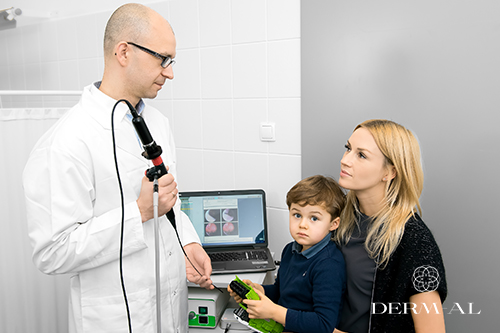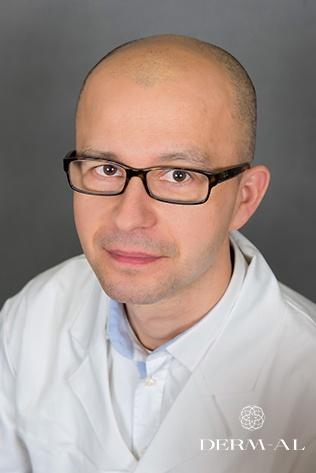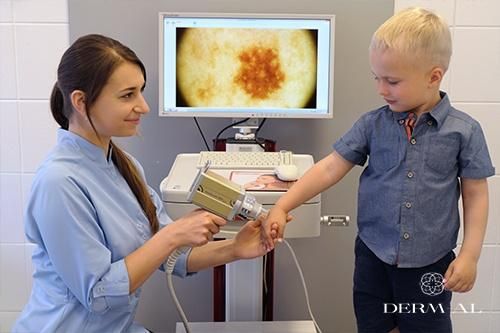Endoscopic examination of the third tonsil

- Description of the examination
-
At the Derm-Al Centre, we offer endoscopic examination of the adenoid, so-called third tonsil. The examination may be done either through the throat, using an endoscopic spatula, or through the nose, using an advanced endoscope of flexible optics and one of the smallest available diametres - 2.8 mm, which means that the examination is gentle, safe and comfortable.
Endoscopy is currently the most reliable third tonsil examination method. The third tonsil is not visible for the eye, and palpatory diagnosis (with a finger) is very unpleasant and painful for children. Endoscopic examination is the safest and most comfortable method.
The third tonsil, also called adenoid, is situated at the back wall of the throat, above the palatine tonsils and the soft palate. It is a small mass of lymphatic tissue. The third tonsil is a part of the immunological system in young children and it protects the immature immunological system and fights infections. But when a child starts snoring at night, has problems breathing through the nose, has his or her mouth always open and speaks through the nose, it may be a sign that the third tonsil has grown too big. The reasons for an enlarged tonsil are recurrent or chronic infections of the upper respiratory tract and the oral cavity. Enlarged adenoid causes pressure on the auditory tube openings, which may cause ear inflammation, complications in the middle ear and hearing problems.
How does the examination work
The physician examines the third tonsil using a special endoscopic spatula inserted through the throat or a flexible endoscope inserted through the nose. The method depends on the child’s reaction. For some children, it is hard to open their mouth and show their throat to the doctor, in which case the tonsil is best diagnosed through the nose. The procedure is painless and very quick. The image is recorded and may be analaysed on a slow motion video or on pictures. The parents may also see their child’s adenoid on the monitor and they will be given the recording or printout, and description of the diagnosis.Laryngological endoscopic examination is useful in many cases:
- in diagnosing the adenoid (third tonsil) before surgical removal (adenotomy),
- in qualifying for sinus surgery - to examine the openings of sinuses,
- in examining and qualifying for surgery in the case of nasal septum deviation,
- in examining the larynx before thyroid surgery,
- in detecting even very small polyps that are not visible in traditional examination,
- in diagnosing airway patency (nasal polyps, allergic or non-allergic rhinitis, hyperplasia),
- in diagnosing hyperplasia outside the nose, e.g. the auditory tube patency,
- in diagnosing vocal disorders (dysphonia) and swallowing disorders - gastroesophageal reflux disease,
- in diagnosing pain in the laryngopharynx and larynx (excluding cancer, e.g. larynx cancer or inflammatory changes),
- in diagnosing neck tumors to exclude an original focal point of cancer near the larynx and laryngopharynx,
- in ear diagnostics.
-






